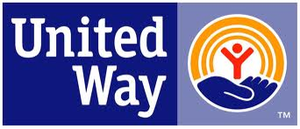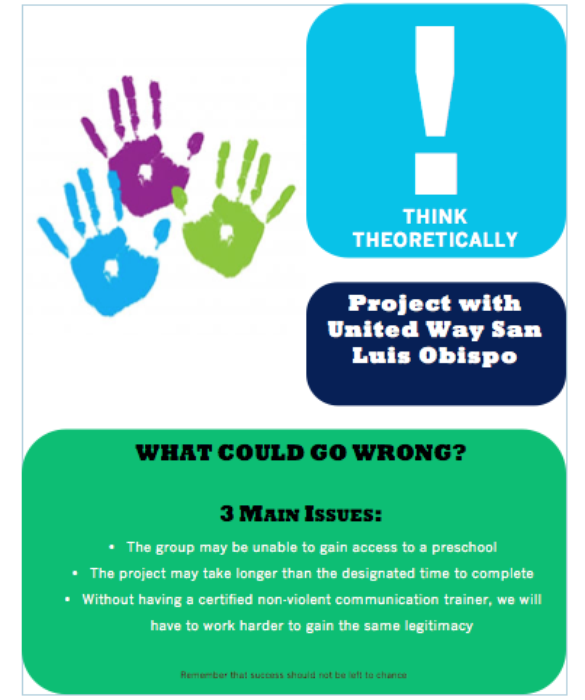SUSTAIN SLO
"SUSTAIN-SLO is a learning initiative formed by the collaboration between faculty, community partners and students. Our intent is to learn together by designing and implementing projects that contribute to a thriving community." (http://sustainslo.calpoly.edu/about/)
Benefits:
- Community involvement via community based learning projects
- Smaller classes
- The knowledge and resources to make a difference
- Working in collaboration with a team
- Analysis of the current educational structure and participation in a different learning dynamic
- Ability to work towards creating a more sustainable community
- Building long-lasting relationships
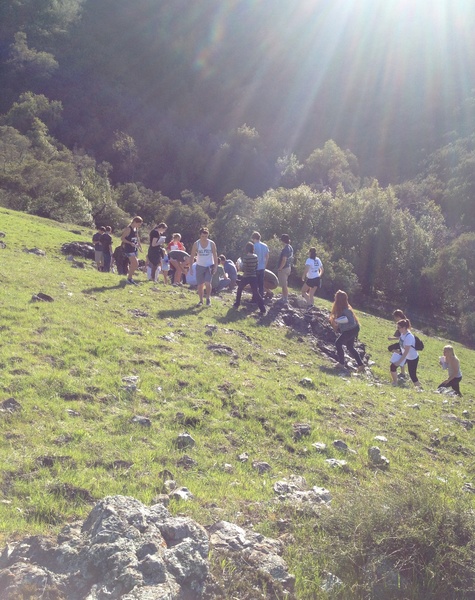 Sustain Bio 114 - Plant Diversity and Ecology Lab (small lab group, hands on experiences, and a lab run by the professor rather than a TA)
Sustain Bio 114 - Plant Diversity and Ecology Lab (small lab group, hands on experiences, and a lab run by the professor rather than a TA)
For more information visit sustainslo.calpoly.edu, or watch the video below:
SUSTAIN SLO LEARNING INITIATIVE -- PROJECT WITH UNITED WAY
PROJECT CHARTER
Project Charter: February 2013
Courtney H. Connor and Ginger M. Jacobs
PURPOSE OF THE DOCUMENT:
The purpose of this document is to communicate the goals and details of the project as a starting place. It is intended that this document may be modified, adjusted or added to as the project progresses.
1. PROJECT GOALS:
Our project combines the goals of two programs within the United Way: Born Learning, and Non-violent communication.
The goal is to combine Born Learning and Non-violent Communication in order to create one program that we will implement in one or more local preschools.
This project combines the passion of our community partners for the Born Learning Program, our Sustain group’s interest in the NVC program, and the United Way’s ideology that problems should be addressed at their root rather than after-the-fact. This is why we want to teach NVC, which we believe to be a valuable tool, to preschool children during their developmental years, instead of trying to teach it to teenagers and young adults that are already at-risk. We hope that, by introducing the language of NVC to children at a young age, they will grow up using NVC. We also hope to get parents and local preschool teachers interested and involved in the program.
2. DELIVERABLES:
- The Sustain students must do a sufficient amount of research in order to fully understand the methods and theories of Born Learning and Non-violent Communication
- Community partners and students must agree on the correct method or program that they wish to create, in order to tangibly merge these two concepts
- Create something that can be reproduced
- Possibly seek NVC professionals to advise and/or sponsor our program
- Find one of more local preschools that will allow us to go into their classes and actually implement this program
- Create a sustainable program so that it can last past this June
3. SCOPE DEFINITION:
The project will include:
A United Way and Sustain partnership during Winter and Spring 2013
The project will not include:
Activities beyond June 2013.
4. PROJECT MILESTONES:
(Dates to be determined when decided upon with Community Partners)
Date to have research and understanding completed
Date to officially decide on a project method
Date to have program completed
Date to meet with school
Dates to visit school and implement the program
2/15/2013 Project Review Meetings with community partner
3/14/2013 Project website due
5. ASSUMPTIONS, CONSTRAINTS, DEPENDENCIES, & CONTEXT
SUSTAIN-SLO is a learning initiative formed by the collaboration between faculty, community partners and students. The intent is to learn together by designing and implementing projects that contribute to a thriving community. As Sustain students and project managers, we are going to “learn by doing” by forming a 20 week partnership with the United Way SLO, with which we have created a project that we will execute.
The United Way SLO’s mission is to improve lives by mobilizing the caring power of our community by focusing on education, income and health.
Born Learning. Children are born learning and while we know a child’s crucial developmental years are between 0-5, many parents and caregivers don’t know exactly what actions to prepare young children for school or the future. By promoting awareness, education and action, Born Learning takes early learning research and translates it into activities and educational tools parents and caregivers can use without changing their daily routine. There is a Born Learning Trail in Mitchell Park for SLO families to utilize for this purpose.
Non-Violent Communication (NVC) is a practical framework for acquiring the skills and language tools that support positive, compassionate outcomes. United Way is currently using this framework to support productive classroom learning environments by delivering workshops to local teachers and administrators, and to improve mental health outcomes in transitional-age youth by offering workshops directly to at-risk teens and young adults ages 16-24.
The proposed project is to create and implement an NVC program for local preschools that will combine the values of the United Way and Born learning. This will enrich and educate the community and future adults of SLO to use non-violent communication, therefore living happier and safer lives at school and at home.
Anger is the result of an unmet need, and most people do not know how to voice their needs. That is what the language of NVC is about. A major constraint of our project is that we technically cannot use the official NVC trademark on anything we create because we are not certified in Non-Violent Communication. A challenge will be getting a school to welcome us into their classroom without that legitimacy; luckily the United Way is a well-known national coalition and possibly already has connections with a local school. However, we must do enough research and create a solid program before we present it to a school. We are currently brainstorming ideas on the best way to do that, but we need to fully educate ourselves in the way of NVC first. In order to educate ourselves, we are watching videos and reading NVC books the United Way SLO has provided for us. We are given a $300-500 budget from Sustain; however, it is too early to evaluate exactly how that will be used. Long-term goals may include getting the preschool/s to use NVC in their classrooms beyond this partnership, to have NVC be used with young children in the future and not just the current 16-24 year olds, and getting more students, possibly from the Psychology and Child Development department, involved.
7. PROJECT ORGANIZATIONAL STRUCTURE:
|
Key stakeholders and team members by function, name and role.
|
|||
|
Function |
Name |
Project Assignment |
|
|
CEO |
London, Rick |
To help guide, assist, and execute our project by using their experience and connections in the community |
|
|
Volunteer |
Aanerud, Lily |
To help guide, assist, and execute our project by using their experience and connections in the community |
|
|
Student Project Manager |
Connor, Courtney H. |
To create and implement an obtainable project using our shared goals |
|
|
Student Project Manager |
Jacobs, Ginger M. |
To create and implement an obtainable project using our shared goals |
|
Project charter reflection:
The project charter was the most helpful tool presented within IME 270 - Project Management. The charter is an "active document" that that can be changed to define the project throughout the course of the time spent in Sustain. It allows for the ability to keep the project objectives and progress in a single place. From this place, the goals can be shaped and one can act upon "fulfilling" the project as a whole.
The charter was helpful because it allowed for the group to solidify its goals. Previous to making the charter, we had no set course of action. We had a plethora of ideas surrounding what our project could be; however, the disorganization surrounding the multiple ideas made it hard to begin to implement the project. When we sat down to create the project charter, our ideas became visible and thus more concrete. It essentially laid the framework from which our project continues to take form.
The charter has proven to be helpful in more ways than just organization. It is a document which we can give to others to inform them of our objectives. It allows the community to have access to the ideas that shape our project and from that, allows for a broader base of support.
Non-Violent Communication Information:
www.youtube.com/watch?v=-dpk5Z7GIFs
www.youtube.com/watch?v=DgaeHeIL39Y
www.unitedwayslo.org/nonviolentComm.html
Born Learning Information:
www.unitedwayslo.org/BornLearning/index.html
GANTT CHART
(TIME MANAGEMENT CHART)
GANTT Chart Reflection:
"SAFETY" POSTER
Safety Poster Reflection:
CLASS REFLECTIONS
BIO 114
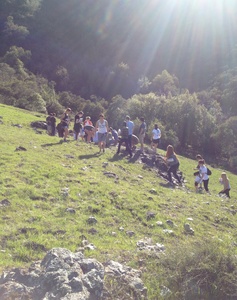 Field trip to Reservoir Canyon looking for the chocolate lily
Field trip to Reservoir Canyon looking for the chocolate lily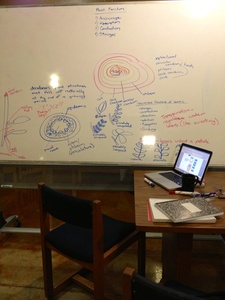 Studying for midterm 1
Studying for midterm 1 On top of the sand dunes
On top of the sand dunes Learning about the plants on the sand dunes
Learning about the plants on the sand dunes Sticky Monkey Flower (Mimulus aurantiacus), at the sand dunes
Sticky Monkey Flower (Mimulus aurantiacus), at the sand dunes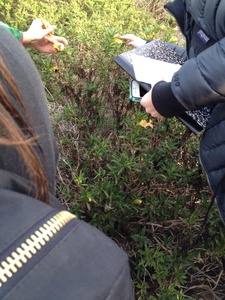 Taking a closer look at the sticky monkey flowers and how they trap pollen
Taking a closer look at the sticky monkey flowers and how they trap pollen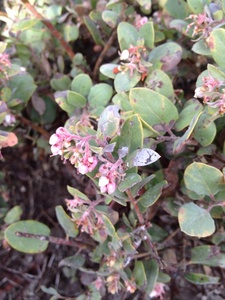 Morro Bay Manzanita (Arctostaphylos morroensis)
Morro Bay Manzanita (Arctostaphylos morroensis) 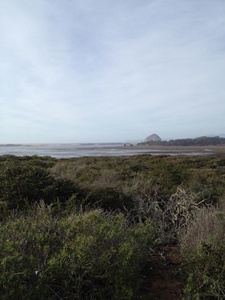 A view of Morro rock
A view of Morro rock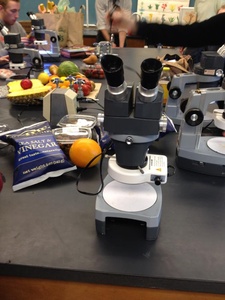 Taking a closer look at food
Taking a closer look at food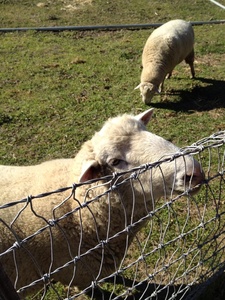 The sheep at Windrose Farm
The sheep at Windrose Farm 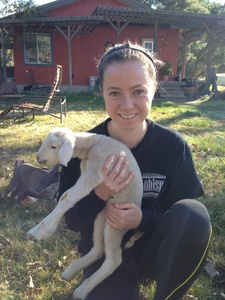 Holding a lamb
Holding a lamb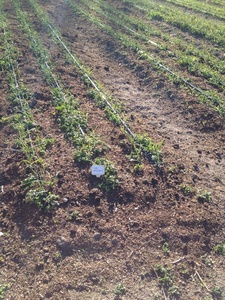 Learning about the conditions needed for farming
Learning about the conditions needed for farming
BIO 114 - Plant Ecology and Diversity - Reflection:
IME 270
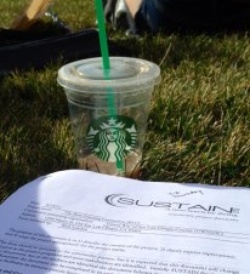
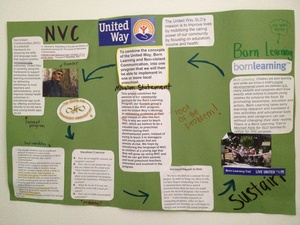 This poster was created and used for the purpose of informing others about our project with United Way
This poster was created and used for the purpose of informing others about our project with United Way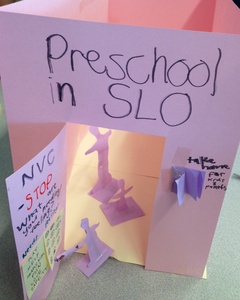 A visual demonstration of the potential program in action
A visual demonstration of the potential program in action
IME 270 - Project Management - Reflection:
ES 112
ES 112 - Race, Culture, Politics in U.S. - Reflection:


